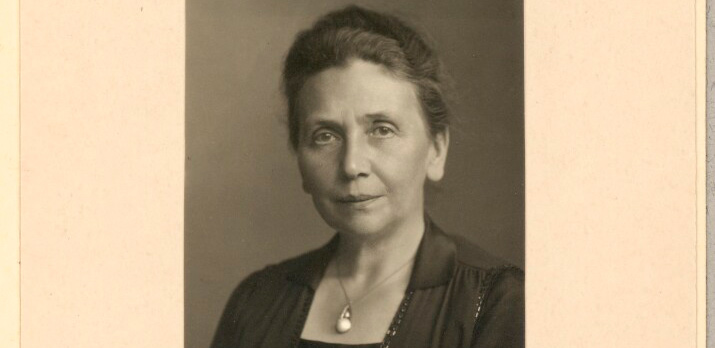Eva Moltesen: The Kalevala is the backbone of the Finnish self-esteem
In 1909 in the theme issues of the Kalevalavihko (issues 2–3) in the journal Valvoja a selection of comments on the national epic by translators of the Kalevala were published. Eva Moltesen (née Hällström), who was part Danish and part Finnish, reflects in her article upon, besides her own relationship, also upon the relationship that the Finnish people have to the epic tale. The article is dated in Copenhagen on December 12, 1908.

Eva Moltesen, née Hällström (1871–1934).
“When I was very young, I thought that the Kalevala was the greatest wonder of the world. As i grew older and wiser, I learned that there are other, equally great wonders in the world, but still, the Kalevala has remained the greatest one of them all to me. It conceals all the original wisdom, serene happiness, quiet sorrow, that I have so often seen in the best of my people. Also, it depicts its heroes in such a childish direct manner that the reader, therefore, sees them as real, living human beings — maybe more so in the details than in its entireness.
Perhaps, I have given the Kalevala a too great historic value in my mind. I have indeed almost seen it as the origin of the Finnish civilization. This is how I have thought of it: when a human being feels that he is being looked down on, marginalised and when he feels unnecessary in collaborations, he very soon transforms into this poor outcast, in the same way that people, without any reason, see him. Thus, he loses his will and ability to perform better. And when the people live outside the civilized world, when their language has been trampled on and despised and when they see that all the progress that is being made in their world, in fact, is a result of someone else’s doings, they really do not have the self-esteem to think that they can perform great things. But, when someone else comes to this despised person and says: dear friend, you have this and this wonderful talent, use it, make use of it for other people and delight yourself by using it! And when among these people there is a man, who presents a spiritual treasure that, in all its glory, makes other wonder. When he gives it to the people to see for themselves and says: this is your own, you have created this! Would it not lead to joy and trust in their own abilities, would it not evoke enthusiasm to take initiatives and a feeling of responsibility for their own work? — This is how I have believed that the Kalevala has influenced the people of Finland.
When I got married ten years ago and moved to a new country and saw from the deck of the boat how the Finnish coastline disappeared, I thought that this separation would cause an uncurable wound in my heart and would remain in my mind as a thorn that would scar my happiness. But this did not happen. I am happy to have noticed that the people who previously was an external object of my love, during the years have become internal in my soul. I always carry it with me, and therefore, I do not miss it unbearably. And it is most lively in the Kalevala. I have read it over and over again, I have told my children about it. And the more I have learned to know and love these people among which I now live, the more I have wished that I could depict my own people for them. — This is the reason why I started to think about my small presentation of the Kalevala in Danish.
I knew very well that the teacher Ohrt, at the same time, was working on a Danish translation of the Kalevala and it did come out a few months before my book. I even thought of delaying the publication of my book, since I, by no means, wanted to diminish the distribution of this extensive, extraordinary translation by my own small and insignificant book. But as it happens, I also thought that maybe it would not do any harm, but instead perhaps it would be able to attract new friends of the Kalevala — being affordable and comprehensible, and maybe these new readers would like to learn to know the more perfect version of it, after having read my book.”
Kuva: Portræt af Eva Moltesen. Elfelt. National Library of Denmark. CC BY-NC-ND.
